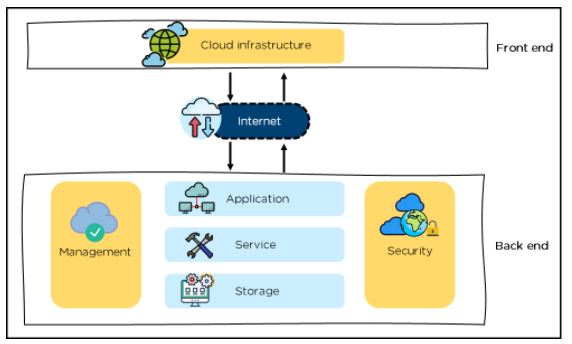How Cloud Architecture and Migration Drive Digital Innovation
Embracing the Future of IT Infrastructure
As enterprises strive to stay relevant in a digital-first world, their legacy IT systems often become a bottleneck to innovation. The cloud offers a dynamic solution, allowing organizations to modernize infrastructure, improve agility, and enhance customer experiences. At the core of this transformation lies cloud architecture and migration, a strategic approach that allows businesses to build scalable, resilient systems equipped for the demands of today and the future.
Defining Modern Cloud Architecture
Modern cloud architecture is the framework that enables applications, data, and services to operate seamlessly across distributed environments. It includes compute, storage, networking, and application services built on platforms such as AWS, Azure, and Google Cloud. The flexibility of these environments allows businesses to adopt multi-cloud or hybrid models depending on their needs. A thoughtfully designed cloud architecture maximizes performance, supports automation, and ensures a secure operating environment.
The Strategic Role of Cloud Migration
Cloud migration is not just a technical shift but a comprehensive strategy that repositions a company’s entire IT ecosystem. Whether it’s migrating virtual machines, refactoring legacy applications, or replatforming databases, a successful migration requires careful planning and execution. The goal is not merely to move assets but to optimize them for the cloud. By engaging in a structured cloud architecture and migration process, companies can reduce costs, improve speed to market, and future-proof their infrastructure.
Key Benefits Driving Cloud Adoption
One of the primary advantages of migrating to the cloud is scalability. Organizations can scale resources up or down based on demand, ensuring efficient use of infrastructure. This elasticity translates into cost savings and improved performance. Additionally, cloud platforms offer integrated tools for analytics, automation, and machine learning—empowering companies to drive innovation without major hardware investments. Through cloud transformation, teams gain the flexibility to experiment, iterate, and deliver faster than ever before.
Security and Compliance in the Cloud
Security remains a top priority for businesses migrating to the cloud. Modern cloud environments provide advanced tools for encryption, access control, and threat detection. However, these tools must be implemented within a secure and compliant architecture to be effective. Businesses that follow best practices inc Cloud Engineering an ensure that their cloud systems are not only safe but also aligned with industry standards and regulatory requirements like GDPR, HIPAA, and ISO.
Cloud Migration in Practice: Industry Applications
In the financial sector, cloud migration enables secure real-time processing of transactions and AI-driven fraud detection. In healthcare, it supports electronic health record systems and telemedicine platforms. For retail businesses, cloud platforms deliver scalable e-commerce solutions with integrated analytics. These use cases demonstrate the versatility of cloud architecture and migration and how it can adapt to meet the unique needs of different industries.
Avoiding Common Pitfalls During Migration
Despite its advantages, cloud migration can present challenges. Poor workload assessment, misaligned architecture, and lack of expertise are common pitfalls. Organizations must begin with a thorough analysis of existing systems, develop a tailored migration plan, and engage with skilled partners. By leveraging managed cloud services, companies gain access to continuous monitoring, performance tuning, and post-migration support—ensuring long-term success and business continuity.
Empowering Teams with Cloud-Native Capabilities
Once in the cloud, businesses can fully adopt cloud-native technologies like microservices, containers, and serverless computing. These approaches streamline development, enhance agility, and reduce operational overhead. By integrating DevOps practices, teams can automate deployment pipelines, monitor performance in real time, and deliver software faster. Cloud-native innovation is only possible with a strong architectural foundation—making cloud migration a crucial first step.
Conclusion: Building the Digital Enterprise of Tomorrow
Cloud architecture and migration are central to building a future-ready business. They provide the structural and strategic framework needed to innovate, scale, and compete in a dynamic global marketplace. With the right planning, tools, and partners, organizations can unlock new efficiencies, reduce costs, and transform the way they deliver value to customers. Now is the time to reimagine IT infrastructure—not just as a support function, but as a catalyst for growth, innovation, and resilience.













